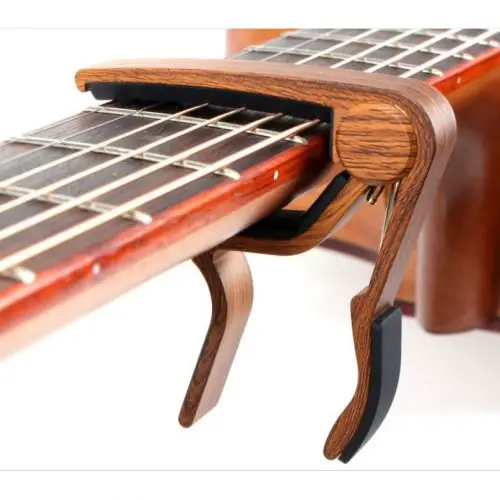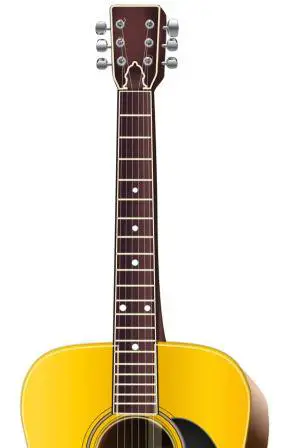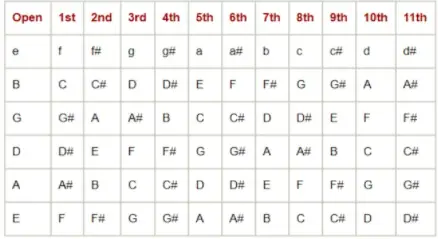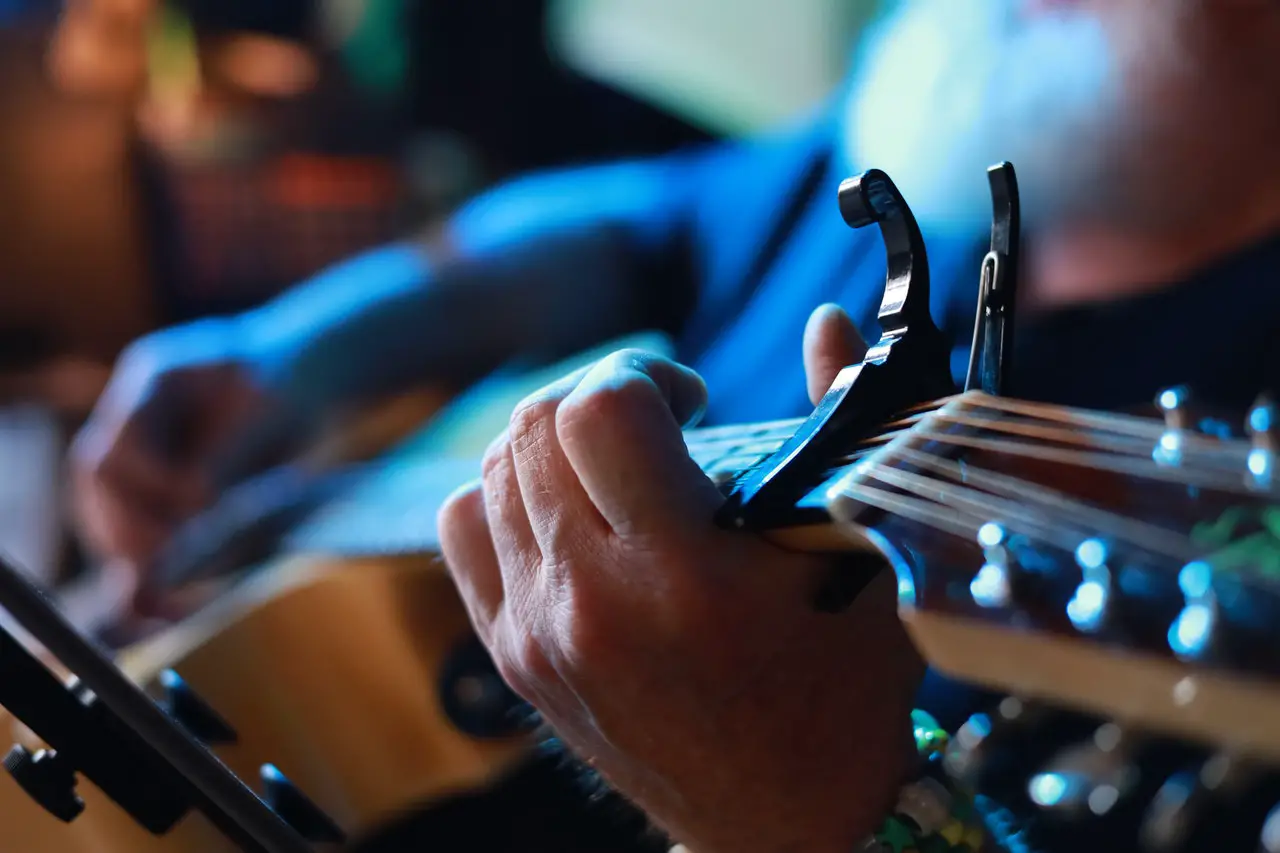Tuning guitar with a capo is not recommended because you will be grinding your guitar strings against the frets.
Also, tuning your guitar with a capo on will disrupt your past tuning when you take the capo off. You would probably need a capo just for a moment – for a specific song, not all the time.
One guy from the local band says he had experience with excessive wear on the frets due to constantly tuning his guitar with a capo on. With the capo on, you’d be actually grinding the strings against the frets, which would cause damage on frets. But he said – “Don’t be too afraid if you have an adequate capo, but still, avoid it. “
In this article, I will help you to find out what’s best for you and your guitar, by explaining both pros and cons of tuning the guitar with the capo on. The article includes:
- Can You Tune Guitar With A Capo On?
- Does A Capo Make Your Guitar Go Out Of Tune?
- How Do You Tune A Guitar With A Capo On?
- What Tuning Is Capo On X Fret (1st, 2nd, 3rd…)?
- Is It OK To Tune Guitar With Capo?
- Conclusion
Can You Tune Guitar With A Capo On?
Technically, it is possible to tune your guitar with a capo on, but it’s not recommended because capo changes the guitar’s physical tension, resulting in a different sound.
In order to keep your guitar in the desired tuning, you should tune before putting a capo on and then re-tune if needed, because it is possible that capo can cause a guitar to get out of tune a little bit.
Therefore, you can tune a guitar with a capo on, but do it only when re-tuning or on special occasions, such as live performances.
If tuning the guitar with a capo on is the only option you know, change that habit to save guitar frets and the guitar from being out of tune.
Does A Capo Make Your Guitar Go Out Of Tune?
A capo does make your guitar go out of tune because of the changes in tension redistribution.
The capo can make the guitar go out of tune by pulling the strings sideways across the fingerboard while putting the capo on or taking it off. Also, it can affect the tuning by pulling the strings down toward the fretboard when you clamp it down. All of that stretches them.
Therefore, try to avoid the capo touching the strings as you slide it to the desired position. When you clamp the capo down, use only enough pressure to get clear ringing from strings. If not, change the capo position toward the fret and closer to the bridge before you apply more pressure.
Also, the tuning can change when tension is redistributed by removing the capo. Some capos press pretty hard on the strings, so they won’t probably be accurately open when those kinds of capos are taken off.
You can learn more about this right here – Will Capo Damage Guitar & Mess Up Tuning? (Veteran Answers)
Therefore, re-tuning is necessary in both cases – after putting a capo on or taking it back off.
But the truth is, the tuning changes when a capo is on are not that big, but they still exist, and you need to re-tune for a perfect and accurate sound.
But, if you see these changes are enormous even after changing the capo’s position and the pressure, then your guitar probably has some intonation problems or wider frets, or you have probably used an inadequate capo for the guitar.

Every time you apply or remove capo, you are pulling the strings with you. This can cause them to go out of tune if done frequently.
Common Reasons For Guitar Out Of Tune (When Using Capo)
Here are 2 most common reasons that can cause your guitar to get out of tune after putting a capo on.
1. Capo applies too much pressure
Capo that’s too tight and not adjustable may apply too much pressure on your strings and cause it to slightly go out of tune.
Capos come in all sizes and shapes, and not every capo is suitable for any guitar. Make sure you get an easily adjustable capo. I would even recommend you to bring your guitar when getting a new capo.
This way you could test the capo out physically. Of course, you should only do this if you really care about the guitar tone. Most guitarists won’t notice much difference.
Here you can find more information about finding the best capo for your guitar – 6 Different Types Of Capos: Sizes, Fits (Easy Choosing Guide)
2. Wider frets increase the chance of tuning issues
If your guitar has wider frets, it’s a bigger chance for your guitar to go out of tune with a capo on.
You can’t avoid this and this doesn’t mean you have to change the whole guitar neck at the luthier’s place. You can probably minimize this effect with a proper setup and capo type.

Wide guitar frets are more prone to go out of tune when using a capo. Make sure your capo is big enough to accommodate the frets.
How Do You Tune A Guitar With A Capo?
You can tune a guitar with a capo on by placing the acpo on the desired fret, using a tuner, and accounting for the capo effects.
Capos alter the pitch for a semitone, on each fret up. If you place a capo on the first fret, then guitar strings will lose the EADGBE pattern and they will become FA#D#G#CF.
You simply place the capo, shift the tone of the strings a number of half steps similar to the number of frets counting from the nut. So, you count the number of frets to the capo and shift the open string notes with the number of half steps counted to the capo.
Keep in mind that tuning a guitar with a capo on shouldn’t be your habit unless you want to re-tune the guitar that has previously been in tune to standard tuning without a capo, or you’re in a hurry during live performances, for example.
So, the right way to tune a guitar with a capo is to start with a guitar in tune to standard tuning without the capo. Place the capo on the neck and play something to check the tuning accuracy, and then re-tune if needed.
For a faster re-tune, try this trick presented in the YouTube video below.
What Tuning Is A Capo On X Fret? (1st, 2nd, 3rd…)
Placing the capo on each fret up raises the pitch of all strings by a half step – semitone.
Technically, you can place the capo at any fret, and placing it at any position away from the nut shifts the notes of the strings to a different note.
Moving the capo a step higher alters the pitch of all strings by a semitone. For example, putting a capo on standard tuning strings will alter their pitch for a half step, so the EADGBE becomes FA#D#G#CF.
The same thing with a capo on the second fret – the EADGBE tuning becomes F#BEAC#F#.
So, if you want to synchronize the harmony with your or the singer’s voice and to raise the pitch for a whole step, place the capo on the second fret. If you want the song to be a whole and a half step higher, place the capo on the 3rd fret, and so on.
Here is the help for those who still don’t know a scale but want to use a capo:

Conclusion: Is It OK To Tune Guitar With Capo On?
You can tune your guitar with a capo on, but it’s not recommended to do it unless you need to check the accuracy of notes.
If you have to tune your guitar and you do it with a capo on, you will disrupt the open-strings tuning – it will alter the pitch after taking the capo off, which is not an actual purpose of the capo.
If you use a capo, it means you don’t want your open-strings tuning to disappear. In these cases, you need a capo just for a moment – for a specific song, not all the time.
Also, a capo on the guitar can make some damage to your frets due to grinding the strings against the frets.
You can learn more about this right here – Will Capo Damage Guitar & Mess Up Tuning? (Veteran Answers)
On the other side, tuning a guitar with a capo on is welcome if you have previously tuned your guitar with a capo off, and you want to check the tuning accuracy after putting it on.
If a guitar is a spot open, putting a capo on will make a guitar go out of tune, maybe slightly, but still out and audible.
If the difference is enormous, then you probably have to visit a luthier because your guitar has some problems with intonation.
So, before tuning the guitar with a capo on becomes your only option, you should remember all the effects of the capo – they cause changes in pitch, respective to the placement on the fretboard – each fret up actually raises the pitch by a semitone. For example, if you place the capo on the 1st fret, your E-A-D-G-B-E strings become F-A#-D#-G#-C-F.
So, I can say the guitar’s physical tension changes with a capo on, which reflects on a sound. Changing the tension changes the tone, which is not what you’re looking for – by putting a capo on, you want to retain an original harmonic content and its fundamental tone.
On the other hand, tuning with a capo on is good for checking the tuning after putting a capo on because the guitar can be slightly out due to changes in strings’ tension redistribution. Also, it’s the fastest way to tune the guitar between songs during live performances.
Therefore, if you don’t have a good reason to tune your guitar with a capo on – don’t do it. It’s recommended that you tune your guitar with a capo off, then put a capo on and re-tune for a flawless sound.
It’s important to tune your guitar before putting a capo on the guitar neck. Then, after putting it on, it’s good to check the tuning accuracy and to re-tune if needed.
I don’t recommend tuning the guitar with a capo on unless you have a specific reason, such as changing between songs during live performances.
Once your strings are comfortable with the tension that standard tuning requires, your guitar won’t be out of tune after placing the capo on a fretboard.
You will lose the standard tuning if you tune the guitar with a capo on, and it’s also possible for your frets to wear due to grinding strings against them.





